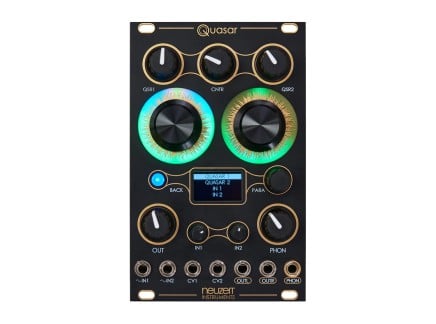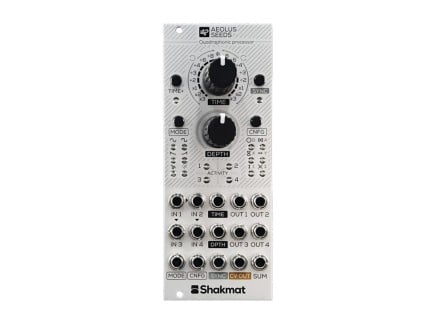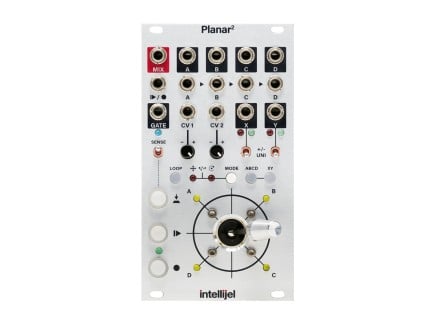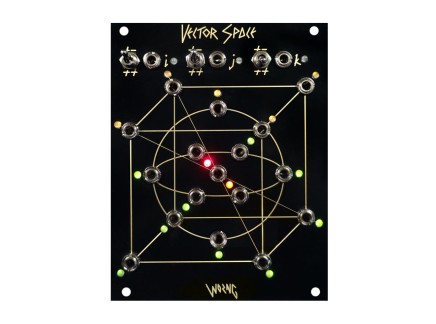Do you like bending space? Do you want to create swirling atmospheres with a bewildering sense of depth? Do you want to make soundscapes that spin around your listener, all within the confines of headphones alone?
Our friend Panic Girl recently made a video exploring some of the weird and wonderful effects you can achieve with the Neuzeit Instruments Quasar. This module leverages advanced binaural techniques in order to create a pseudo-3D mixing/panning environment where sounds can be convincingly positioned anywhere in virtual space relative to the listener. So, unlike most mixers/panners which only provide left-to-right stereo placement, Quasar can convincingly place sounds above you, below you, in front of you, behind you, to your side, or anywhere in between. Moreover, it can create a sense of continuous motion through space, creating soundscapes that swirl and twist around you as they go.
Be sure to check out Panic Girl's video above, and scope out her excellent YouTube channel! And of course, read on for some more thoughts about spatialization in modular synthesizers—and of course, to learn more about what Quasar is and how it works.
Spatialization in Modular Synthesizers
Spatialization has been a key part of electronic music since nearly its very inception. As soon as musicians began to discover the power of the loudspeaker, they began to realize that multiple loudspeakers could provide an immense amount of sonic power. By strategically balancing sounds between multiple speakers in multiple locations, you can create a sense that sounds are located anywhere you want in a space. You can create the illusion of sounds moving from one point in space to another—you can even create the illusion that the space itself is changing over time. Sound spatialization...is a trip.
By far the most common means of spatialization is what we described above: by balancing the loudness of sounds between multiple speakers, we're embarking on a process called "panning." Panning is a common technique in both synthesis and recording applications, typically providing you the opportunity to position sounds anywhere you'd like between two speakers. Today, most self-contained commercial synthesizers provide stereo outputs, with some means of balancing a sound between two outputs. Historically, though, modular synthesizers have taken a more open-ended approach to spatialization. Some of the first commercially available modular systems from Buchla, for instance, provided the opportunity for voltage-controlled quadraphonic panning, allowing users to dynamically locate sounds between four speakers for even more complex sonic arrangements.
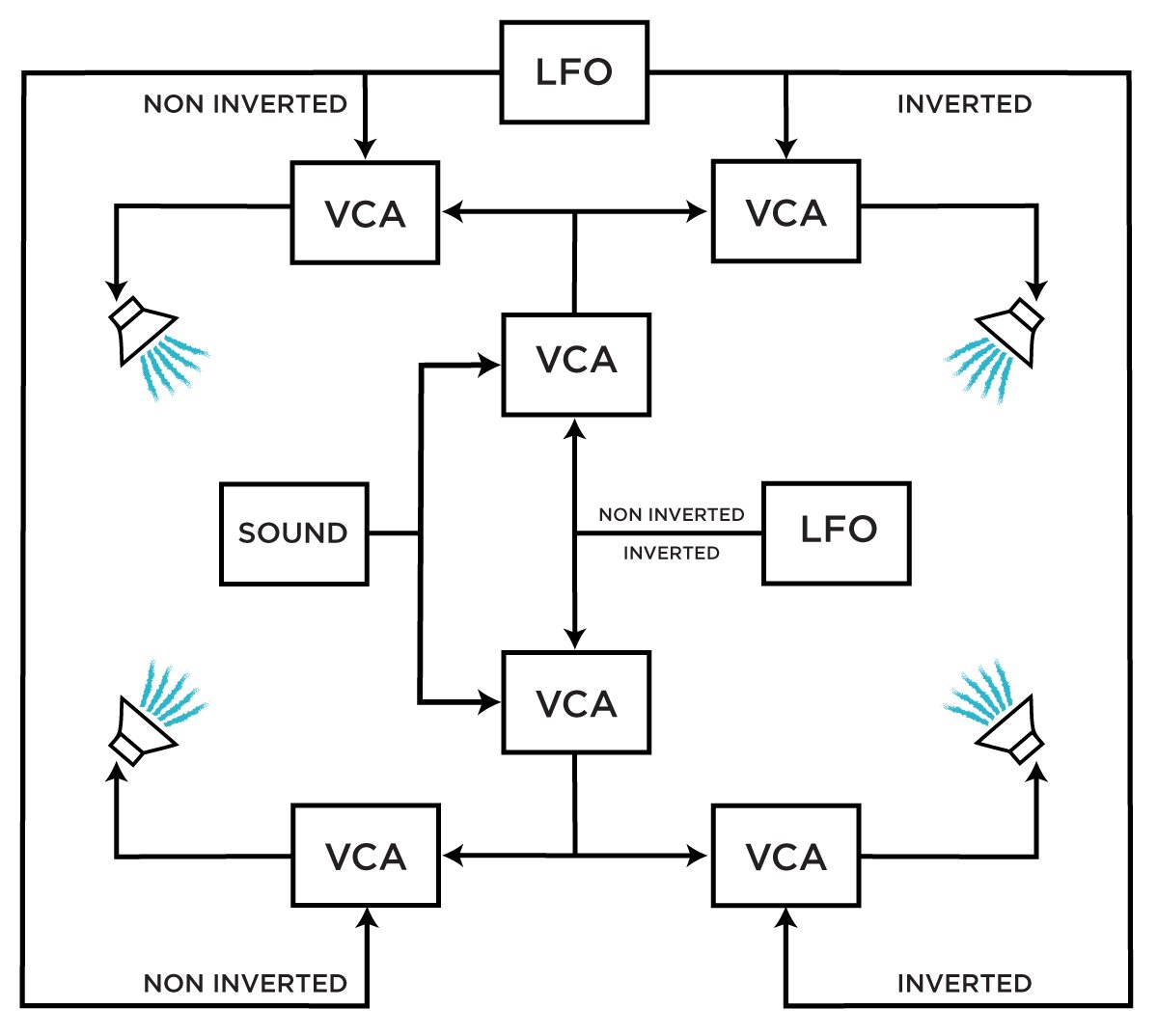
However, quadraphonic sound and other multi-channel audio applications are complex to realize (see above for a typical quadraphonic panning scheme for modular synthesizers). It's common for musicians with home studios to have two speakers, for instance, but far less common for them to have four speakers, or eight, or more. As such, an enormous amount of research has been done in researching psychoacoustic approaches to spatialization. After all, as humans, we generally have two ears that allow us to understand sounds' spatial locations with a remarkable degree of precision...so why should we need so many speakers to create a sense of space?
As it turns out, we don't! Especially when using headphones, there are an enormous number of ways to trick your ears into believe that sounds are coming from any given location: near, far, above, below, left, right—it's all fair game. By altering a sound's loudness, brightness, its phase displacement from one ear to the other, and the amount of reverberation applied, you can do quite a lot of bizarre tricks. And these types of binaural spatialization processes are what Neuzeit's Quasar is all about. Let's take a closer look at Quasar and the musical opportunities it provides.
Neuzeit Instruments Quasar Explained
Neuzeit's Quasar is a dual binaural spatialization module capable of creating the illusion of three-dimensional spatialization. It features two inputs, two outputs, and the ability to do any number of spatial manipulations of either or both inputs, independently or in tandem with one another. It's pretty wild. Let's take a look at its controls.
Quasar features two inputs, two primary outputs, a dedicated headphone output, two assignable CV inputs, two multi-function smooth encoders backlit with LED feedback, three additional level controls, and a screen for parameter selection. Each set of outputs (main outs and headphones) have their own dedicated level controls. Looking at the front panel, you'll notice three level controls at the top of the module, labeled QSR1, CNTR, and QSR2, respectively. These represent the loudness of the Center signal and the two Quasar signals. But...what is a Quasar, you might ask?
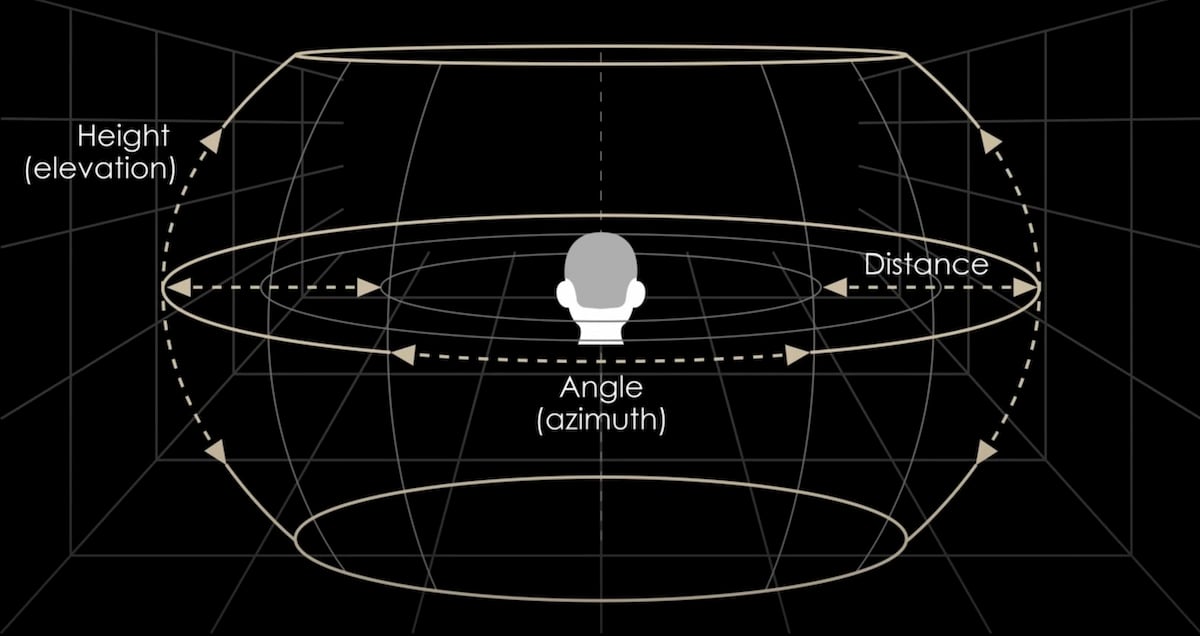
In Neuzeit-speak, "Quasar" is the term used to refer to a single binaural spatialization effect—like the 3D equivalent of a panner. A Quasar has several different parameters for determining spatial position, reverb characteristics, and motion within space. Sound passing into a Quasar can be manipulated in three dimensions, parameterized as height, distance, and angle. So, rather than using X/Y/Z coordinates to locate the sound, you instead determine how high or low it is in the space, how far it is from the listener, and at what angle from 0–360 degrees it is located relative to the front of the listener's head. This enables a number of interesting tricks...and when combined with the two multi-function smooth endless encoders, it becomes possible to smoothly reposition sound without any discontinuities in the binaural sound field (a challenge with coordinate-based systems). Each Quasar has an internal option for continuous rotation of the sound in the 3D space, and a simple room reverb can be added for more convincing placement of sounds at great distances. Additionally, Quasar features two multi-shape LFOs which can be assigned to any of the spatialization parameters, reverb amount, and more. The LFOs can even be retriggered from external sources, and can even operate in one-shot mode for triggered position randomization, spatial envelope-like effects, and more.
So, now that we better understand what a "Quasar" is, let's revisit the module's overall structure. The module offers two audio inputs, and includes two Quasars, meaning that you actually have two of these spatial panners at your disposal. This should clarify the function of the knobs at the top of the panel: QSR1 is a level control for the first Quasar, QSR2 for the second, and CNTR is a control for the level of the incoming mono signals, passed directly to the outputs and blended with the Quasar outputs themselves. What's even more interesting is that audio routing within the module is surprisingly flexible. You can send each of the two inputs into their own Quasar, for instance—but you could also send a single input to both Quasars, or both inputs to each Quasar at different levels. Moreover, the module includes interesting crossover functions that could allow you to send only specific frequency ranges of each input to different destinations. For instance, to keep your mixes relatively spatially balanced, you might elect to send the low frequencies of your input signals only to the Center destination, with higher-frequency content being sent to the Quasars for spatialization and reverberation.

The two CV inputs are arbitrarily assignable; each can be assigned to multiple parameters, making it possible to treat them like "macro" controls for many aspects of your spatialization process. If I have any complaints about the module, it's simply that I wish it had more CV inputs—however, given the fact that you can modulate multiple parameters from each CV input, that the Quasar features multiple (quite flexible) internal modulation sources, and that there's a function for continuous rotation built into each Quasar, I do consider the number of CV inputs to be a reasonable limitation. Realistically, you still won't have any difficulty constructing complex spatial scenarios with these controls alone.
Like any significantly menu-based instrument, I initially approached Quasar with a bit of skepticism. However, I think it's worth noting that Quasar is actually quite easy to navigate, with a completely flat menu structure that never takes you far from where you want to be. It's very easy to get around, the encoders feel great, and the built-in LED visual feedback make setting levels, positions, and visualizing modulation very easy and immediate. There's no deep diving, and it's always visually clear what's happening.
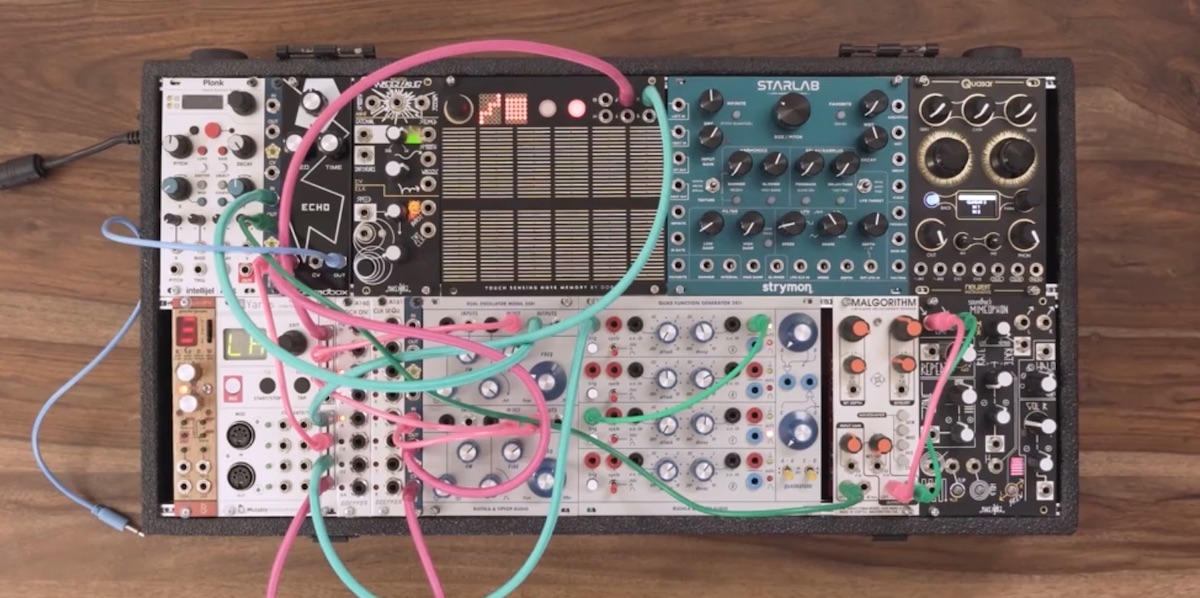
All in all, I'm thrilled that Quasar exists. It's amazing to have such advanced spatialization potential available within the confines of stereo/binaural audio. It's somewhat common for modular synthesizers to offer quadraphonic panning, which is great, but impractical for many musicians—so being able to explore the implications of spatial panning within a more typical stereo setup is quite satisfying. Of course, it works best in headphones—but sure enough, listening on monitors or loudspeakers provides its own peculiar sense of space and depth that is still well worth exploring.
So, is Quasar for you? If you're interested in space as a musical parameter, if you're interested in manipulating position rhythmically, and if you're interested in creating engrossing soundscapes with astonishing depth, then yes—you'll probably find it quite inspiring.

